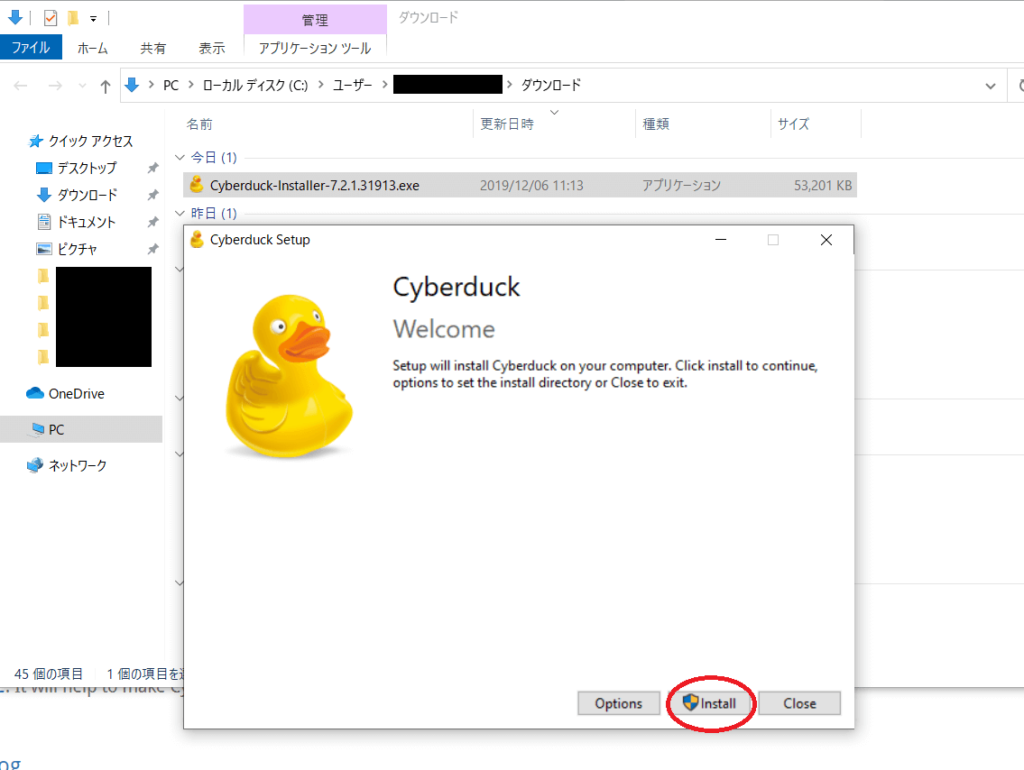
- CYBERDUCK INSTALL STUCK INITIALIZING HOW TO
- CYBERDUCK INSTALL STUCK INITIALIZING INSTALL
- CYBERDUCK INSTALL STUCK INITIALIZING SOFTWARE
Once the resources it requires become available, the batch scheduler will then run your job on a subset of our hundreds of “compute nodes”. Your job will then wait in a queue along with other researchers' jobs. These nodes serve as a staging area for you to marshal your data and submit jobs to the batch scheduler. When you login you’ll be connected to one of the system’s “login nodes”. Using HPC is a little different from running programs on your desktop. Cluster - many nodes connected together which are able to coordinate between themselves.Core (processor) - A single unit that executes a single chain of instructions.HPC, or High Performance Computing, generally refers to aggregating computing resources together in order to perform more computing operations at once.
CYBERDUCK INSTALL STUCK INITIALIZING SOFTWARE
Try reviewing locally installing software at OSC. Software not already installed on OSC systems can be installed locally to one's home directory without admin privileges. If you are unfamiliar with the command line in Linux, then try reviewing some Linux tutorials.įor now, try to get comfortable with moving to different directories on the filesystem, creating and editing files, and using the module commands from the software pages.
CYBERDUCK INSTALL STUCK INITIALIZING HOW TO
OSC managed softwareĪll the software already available at OSC can be found in the software listing.Įach page has some information on how to use the software from a command line. There are other options, so please browse the OSC software listing. See add python packages with conda or R software for details. Some of the common programming languages users need an environment set up are python and R.
CYBERDUCK INSTALL STUCK INITIALIZING INSTALL
Environment setup to install packages for different programming languages

Make sure to use either or as the hostname to connect to. You can choose to log in to OSC with any ssh client available. In this terminal one can perform the needed commands in the below sections on environment setup and software use/installation. Getting to a terminal without starting a desktop sessionĪ terminal session can also be started in OnDemand by clicking Clusters then Owens Shell Access. Just remember to change the cores to one until you understand what you need. If there is specific software in the Interactive Apps list that you want to use, then go ahead and start a session with it. Try using only a single core at first, until you are more familiar with the system and can decide when more cores will be needed. Notice that there are a lot of fields, but the most important ones, for now, are cores and the number of hours. Look for the navigation bar at the top of the page and select Interactive Apps, then Owens Desktop. The best place to start is by visiting, logging in, and starting an interactive desktop session.

Usually one has some setup that needs to be performed before they can really start using OSC, like creating a custom environment, gaining access to preinstalled software, or installing software to one's home directory that is not already available. Finally, after the above setup, one can start using OSC resources.


 0 kommentar(er)
0 kommentar(er)
